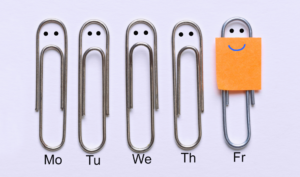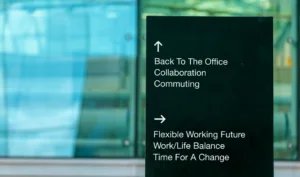
Leaders: Do You Connect Employees With Their Noble Purpose?
When employees feel disconnected from their jobs — or their work doesn’t bring a sense of purpose to their lives — they’re more likely to

When employees feel disconnected from their jobs — or their work doesn’t bring a sense of purpose to their lives — they’re more likely to

Leaders, do workforce engagement issues keep you up at night? If not, here’s a powerful wake-up call from Gallup. Last year, the global employee engagement

Sponsored by The Culture Platform What tools actually help managers manage their people? That’s the most important question every organization needs to ask itself as the

When the pandemic arrived in 2020, everyone’s definition of work changed in a heartbeat. Most people headed home, leaving their offices, cubicles, water coolers, and

We all share a deep desire for belonging. From Abraham Maslow to Brené Brown, experts agree that this “indescribable feeling of being welcomed” is a

When it comes to implementing a successful engagement strategy, HR teams can’t afford to ignore employee expectations. Yet, research suggests that too many organizations forget

A strong internal communications function is essential for every company, both culturally and operationally. It helps keep employees aware of relevant news and updates, excited

If you lead a business of any kind, it’s essential to understand the factors that influence employee satisfaction in your organization. This kind of insight

The world of work is a little rough these days, to say the least. Companies large and small continue to scramble in the face of

For most office-based employees, “work” no longer represents a physical location. In fact, 84% of people who worked remotely during the pandemic said they intended

Faced with increasingly turbulent economic times, businesses are rapidly learning the importance of strong leadership. The world has had enough problems dealing with the Covid-19

Long before the pandemic, many organizations struggled with employee engagement. But now, it’s an even tougher hill to climb. Hybrid and remote work have become

Keeping valued employees onboard is top-of-mind for many organizations these days. But what kind of employee retention strategies are actually working? To find out, we

Without a doubt, employee surveys are the most widely used employee engagement tool. Surveys make it possible for employers to gather workforce feedback quickly and

Numerous jobs can be performed remotely or on a hybrid schedule. Still, more than 70% of full-time roles require people to work onsite. For instance,

For more than two years, employees have slowly — and sometimes reluctantly — returned to their workplaces. Leaders have been trying to instill a sense

Sponsored by The Culture Platform At some point in the last 20 years, companies started to believe employee engagement should define a manager’s role. And

We may or may not be heading for an economic downturn this year, but we certainly are seeing a slew of layoffs. The technology industry

Sponsored by Social Flowers What a difference three years can make! I’m sure that’s what many remote employees are thinking these days. Before the pandemic,

The pandemic has sparked a global conversation about whether people who’ve been working from home should be free to choose their preferred work location. It’s

“Absence makes the heart grow fonder.” No doubt, you’ve heard this familiar quote. You may even have said it to encourage others who are separated

Work Norms Are Changing In 2019, about nine million U.S. civilians worked from home on a regular basis. Then the pandemic arrived. Nearly overnight, remote

We don’t need research to tell us the future of work will be much different from pre-pandemic norms. But Covid isn’t the cause. Disruption was

In today’s challenging talent environment, retaining employees is a must. That’s why so many organizations consider onboarding new hires a top priority. When people feel

As 2022 comes to a close, several work trends are clearly visible on the horizon. Here’s one employers can’t afford to ignore — an alarming